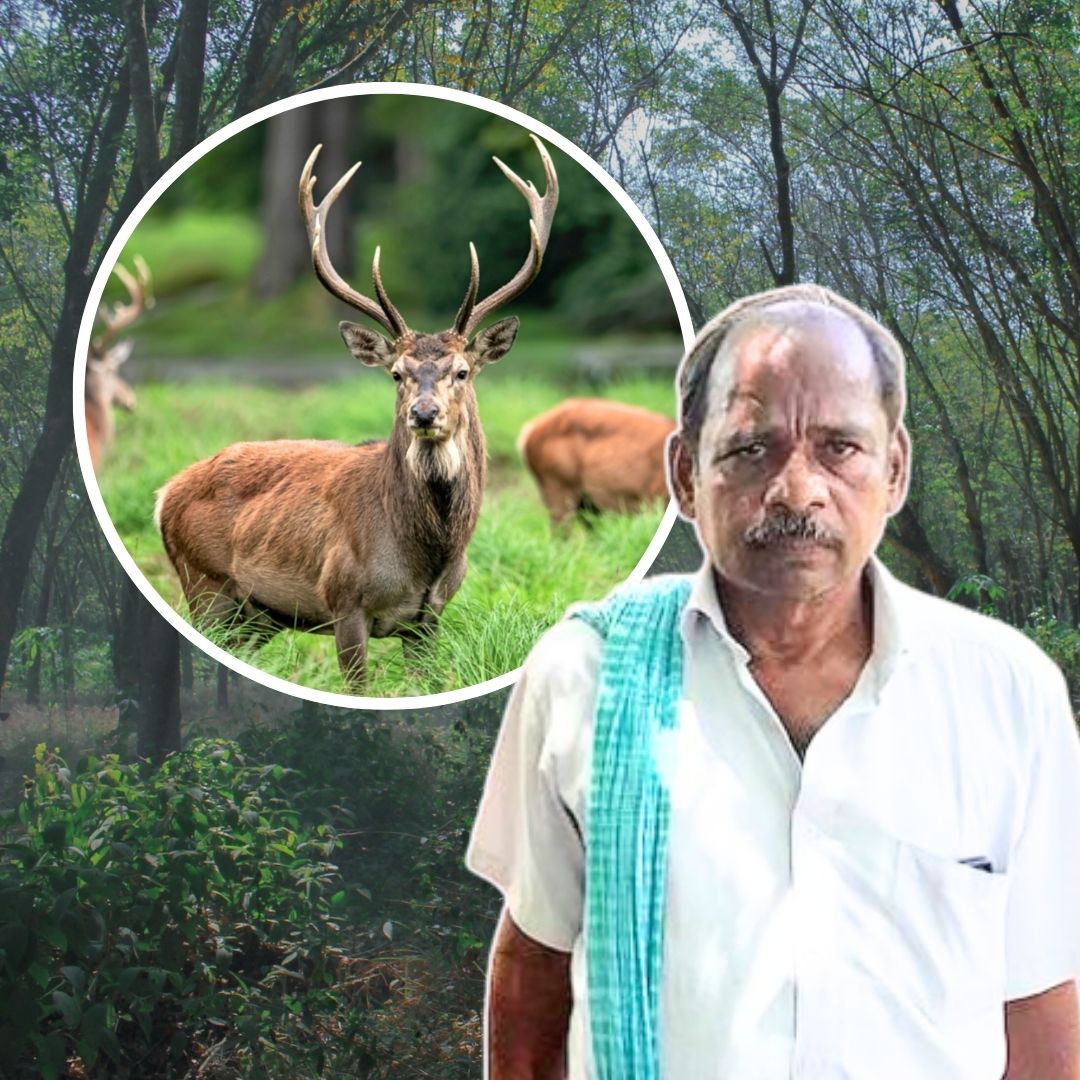R Gurusamy, a 70-year-old farmer from Pudupalayam, Tamil Nadu, chose kindness over conflict when wild deer started wandering onto his land. Instead of chasing them away, he transformed his 50-acre farm into a sanctuary sheltering over 1,800 deer.
His compassion has inspired his entire village and brought sustained attention and support from conservationists and officials. Despite challenges from water scarcity and ecological balance, Gurusamy’s commitment fosters hope for coexistence between humans and wildlife.
From Farmland to Forest: The Start of a Sanctuary
When a few deer timidly wandered onto Gurusamy’s farmland two decades ago, many would have considered them a threat to crops and livelihoods. But for Gurusamy, they were guests deserving refuge. Over time, his tolerance blossomed into a dedicated sanctuary as he set aside nearly all his land for the deer, reducing his own cultivation to a mere 10 acres.
The farm slowly transformed, blossoming into a lush green refuge where banana and tapioca trees provide sustenance and shade. What was once ordinary farmland is now home to a miniature forest alive with the rustling of hooves and leaves, a testament to peaceful coexistence.
A Growing Family, But Not Without Challenges
The original handful of wandering deer has now multiplied into a thriving population of about 1,800, protected by Gurusamy and the local community. This blossoming ecosystem has earned praise from environmental groups like the Nature Society of Tirupur, while also raising concerns.
The absence of natural predators means the deer population has surged, causing potential ecological imbalance and conflict with neighbouring farmers worried about crop damage. Seasonal droughts and diminishing groundwater complicate this picture further, challenging the survival of deer and humans alike.
Despite these hurdles, Gurusamy remains undeterred, calling for compassionate solutions and government support to maintain this balance.
The Hands That Watch Over the Sanctuary
Officials from the local forest department and district collectorate regularly monitor the sanctuary to safeguard wildlife and advise on ecological concerns. Relocating deer is no simple task, experts stress the careful planning required as these sensitive animals are prone to stress-induced fatalities if moved hastily.
The government has sanctioned irrigation projects aimed at alleviating drought impacts, yet Gurusamy’s vision transcends infrastructure alone. His sanctuary represents not just a physical space but a philosophy of empathy and shared existence. It is a living classroom where villagers learn the value of harmony with nature, supported by officials but driven by the farmer’s resolve.
The Logical Indian’s Perspective
In a world grappling with environmental loss and human-wildlife conflict, R Gurusamy’s story stands as a beacon of hope. It teaches that kindness can indeed rewrite destinies, not only for wildlife seeking refuge but also for entire human communities learning cooperation and respect.
The Logical Indian celebrates such narratives that encourage coexistence, empathy, and sustainable living. This story asks us to imagine a future where humans and nature thrive side by side and challenges us to take actionable steps towards protecting the delicate balance of our ecosystems.












